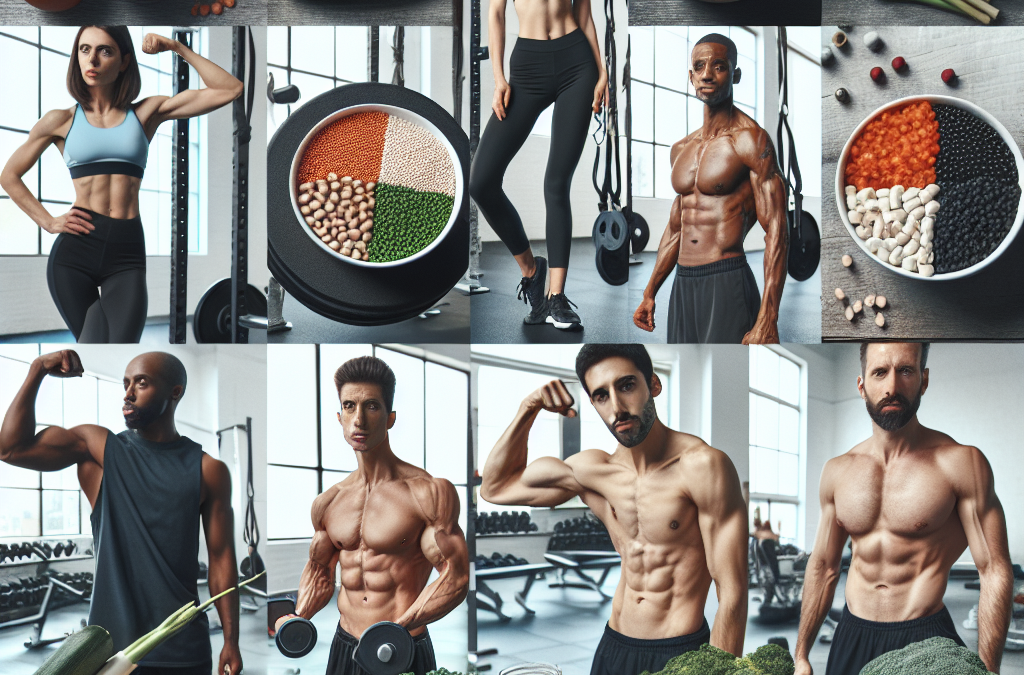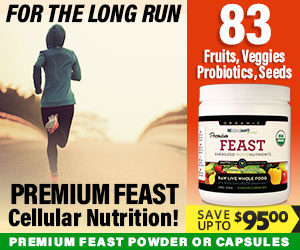Understanding Plant-Based Protein Sources
What Are Plant-Based Proteins?
When I first dived into the plant-based world, I was kinda surprised to learn just how many protein-packed options there are. We’re talking about lentils, chickpeas, quinoa, and so much more. It’s wild to think that beans and peas can pack as much protein as some animal products! It totally shifted my perspective on what “protein” really means.
Plant proteins come with a bunch of benefits, too. They’re generally lower in calories and saturated fats, making them awesome for muscle-building without those extra fat gains. Plus, they’re rich in fiber and other nutrients, so you’re nourishing your body at the same time.
So when you’re thinking about muscle-building, don’t just reach for the whey – get creative with plants. Explore different beans, grains, and legumes, and you’ll start to see what works best for your taste and your body’s needs.
Combining Proteins for Complete Amino Acids
Okay, here’s where it gets cool. Not all plant-based proteins are created equal. Some have all the amino acids you need (like quinoa), while others might be missing a few. So, what I personally love to do is mix different sources to ensure I’m getting the complete set. It’s like putting together a killer playlist of flavors!
For example, pairing rice and beans is a classic combo that creates a complete protein profile. Or you can try hummus with whole-grain pita – yum! By mixing your plant proteins, you ensure that your body gets everything it needs to build and repair muscle after a sweaty workout.
Don’t stress about it, though! Just focus on including a variety of protein sources throughout your day, and you’ll be golden. Before you know it, plant-based muscle will be yours!
How to Assess Your Protein Intake
When I initially transitioned to a plant-based diet, I found myself wondering if I was hitting my protein goals. It’s essential to assess how much you’re getting, especially if you’re working to build muscle. There are loads of apps and tools out there that can help you track your intake.
Don’t just wing it! Make note of your meals and snacks, and see if you’re consistently including protein-rich foods. Once I started doing this, I found it way easier to tweak my meal plans and ensure I wasn’t missing out on those crucial nutrients.
Also, consider consulting a nutritionist or a diet coach who specializes in plant-based diets. They can help you create a tailored plan based on your lifestyle and goals. Because trust me, having that support made all the difference for me!
Designing Your Workout Routine
Mixing Strength Training and Cardio
Fitness isn’t just about lifting weights; it’s about finding what excites you. When I first started focusing on building plant-based muscle, I had to balance my love for cardio with strength training. It’s crucial to have a mix for overall fitness and strength gains. I find that doing strength workouts 3-4 times a week works wonders.
Cardio is just as important in maintaining a healthy heart and supporting your muscle-building goals. Whether it’s brisk walking, cycling, or dancing, find your jam! I like to throw in some high-intensity interval training (HIIT) sessions that really ramp up both strength and endurance.
Don’t forget that consistency is key! Track your workouts, switch things up, and keep pushing yourself. You’ll be amazed at how strong you can get with the right blend of training.
Recovery and Rest Days
Let’s talk about recovery, because seriously, it’s the unsung hero of muscle building! When I first got into working out, I thought I’d build muscle faster if I just pushed myself every single day. Spoiler alert: that’s not how it works! Your muscles need time to rest and repair, especially after those heavy lifting sessions.
Incorporating rest days into your routine has made a massive difference in my progress. On those days, I still do light activities like yoga or walking, which helps with recovery without putting too much pressure on my body.
So, remember to listen to your body. If you’re feeling worn out, don’t hesitate to take a break. Being kind to yourself is just as important as the workouts. Your muscle growth will thank you!
Incorporating Nutrients for Optimal Performance
Beyond protein, let’s not forget about other nutrients! As a plant-based eater, I’ve had to become besties with vitamins and minerals to support my training. For instance, iron, calcium, and omega-3s are all crucial for any muscle-building journey.
For iron, I load up on spinach, lentils, and fortified cereals. It’s also smart to pair iron-rich foods with vitamin C sources (think oranges and bell peppers) to help with absorption. I learned that the hard way, trust me!
Get an Amazing Discount on the Best Certified Organic Whole Food Supplement!
And don’t skimp on healthy fats! Incorporating avocados, nuts, and seeds can seriously enhance my recovery and add the necessary caloric intake for growing muscle. Just like protein, a varied diet is key here!
Staying Motivated in Your Journey
Setting Realistic Goals
Let’s get real about motivation. One of the first things I did when building plant-based muscle was set some clear and realistic goals. I mean, who can stay pumped up when the goals are all out of reach, right? Start small, and have measurable milestones to keep track of your progress.
I remember setting a goal to increase the weight I lifted by just 5-10% each month. Those small victories add up, and before I knew it, I was lifting way more than I ever thought I could. Celebrate those wins, no matter how small – they keep you fired up!
Also, don’t be afraid to update your goals as you progress. Your journey is unique to you, and adapting along the way will keep you engaged and motivated.
Finding Your Support System
One major thing that kept me going was the community around me. Whether it’s friends who also lift or online groups, having a support system makes all the difference! Sharing your journey and finding workout buddies creates accountability.
Plus, it’s just so much fun to have someone to chat with about your meals and workouts. You can swap recipes, suggest new exercises, and keep each other encouraged. Seriously, teamwork makes the dream work!
Also, don’t feel shy about reaching out on social media. There’s a vibrant plant-based fitness community just waiting to be tapped into. Sometimes, a simple like or a comment can boost your motivation immensely!
Keeping a Journal or Tracker
Writing things down has been a game-changer for me! Keeping a journal or tracker for my meals and workouts helps to visually see my progress. When I reflect on what I’ve accomplished over weeks or months, it fuels me to keep going. It’s like patting myself on the back every time I hit a goal!
Besides tracking progress, I also jot down how I’m feeling, what meals I tried, or any new workouts I discovered. This not only helps in building muscle but also keeps my journey varied and exciting. Plus, it’s fun to look back and see just how far I’ve come!
So grab a notebook or whip out your phone and start documenting your plant-based muscle-building journey. You’ll be glad you did!
Conclusion
So, there you have it! Building plant-based muscle isn’t just a fad – it’s a lifestyle that I’ve embraced fully. With the right protein sources, workouts, and support, you too can see amazing results. Remember to keep it fun, diverse, and manageable. Your body will thank you!
FAQs
1. Can I build muscle on a plant-based diet?
Absolutely! With the right combination of plant-based proteins, exercise, and recovery, you can effectively build muscle.
2. What are the best plant-based protein sources?
Some great options include lentils, chickpeas, quinoa, tofu, tempeh, and seitan. Mix them up for balanced nutrition!
3. How often should I work out to build muscle?
Aiming for 3-4 strength training sessions per week, alongside some cardio, can lead to great results – just be sure to listen to your body!
4. Do I need to take supplements on a plant-based diet?
It’s not necessary, but some people find benefits in supplements like B12, iron, or DHA. Just try to get most of your nutrients from whole foods first.
5. How important are rest days?
Super important! Rest days allow your muscles to recover and grow. Incorporate lighter activities or complete rest to optimize your progress.




